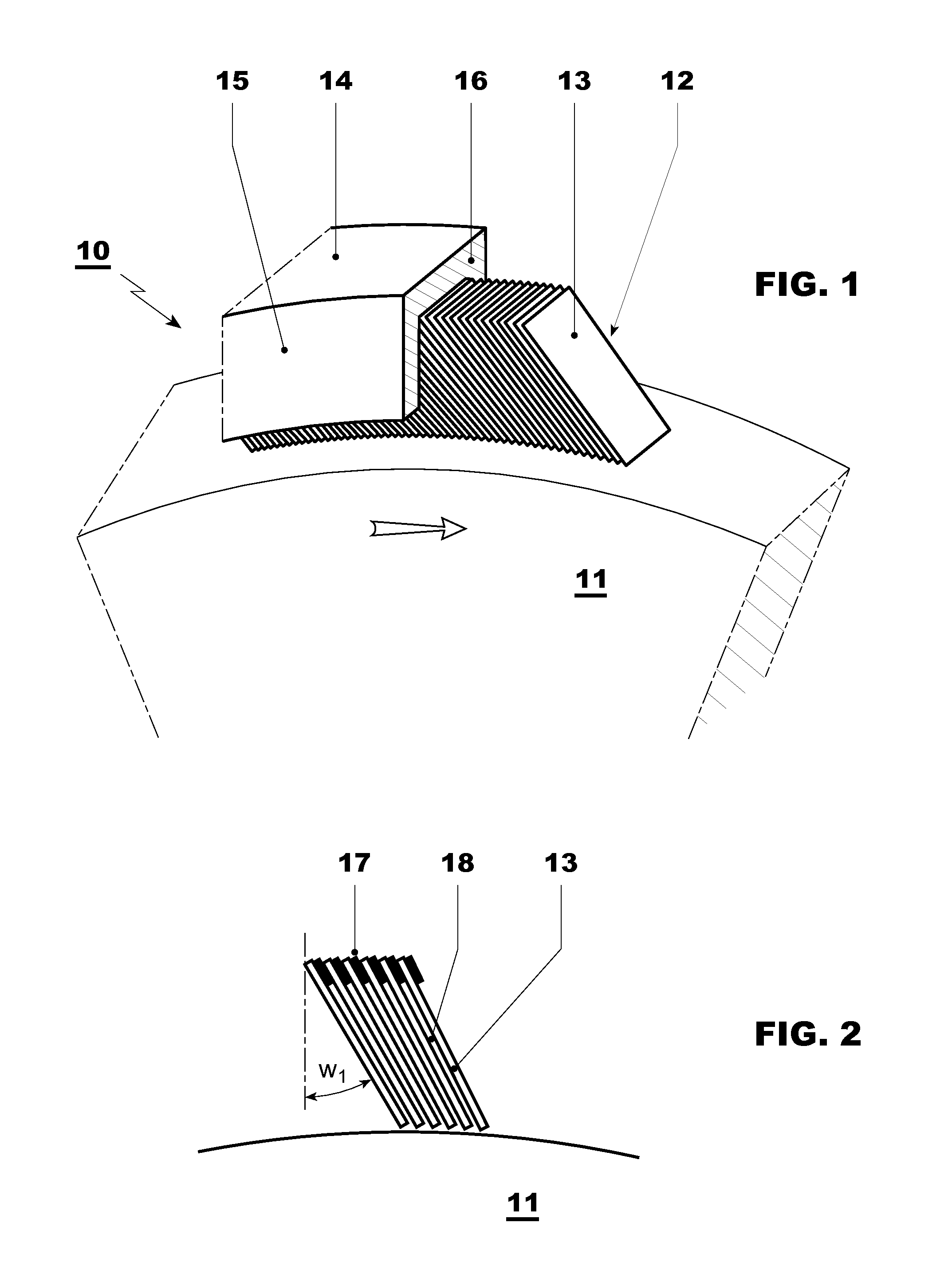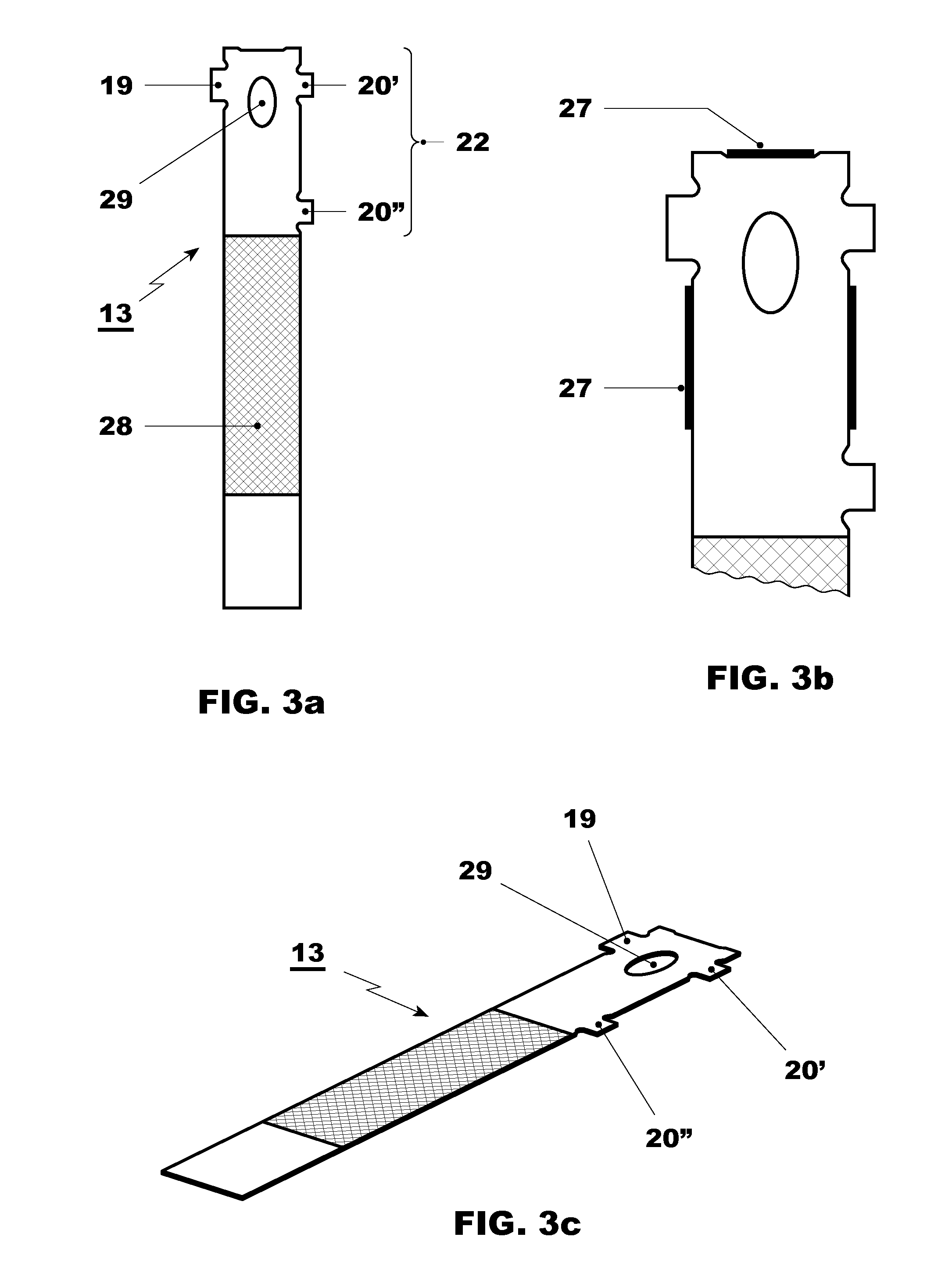Lamellar seal for a turbomachine
a turbomachine and seal technology, applied in the field of turbomachines, can solve the problems of limiting reducing the service life of the seal, so as to achieve cost-optimized production
- Summary
- Abstract
- Description
- Claims
- Application Information
AI Technical Summary
Benefits of technology
Problems solved by technology
Method used
Image
Examples
Embodiment Construction
[0041]FIGS. 1 and 2 reproduce the closest prior art. In FIG. 1, in a perspective side view, the typical construction of a lamellar seal is shown, as is used for example in a gas turbine (10). The lamellar seal (12) seals a rotor shaft (11), which rotates in the direction of the arrow, of the gas turbine (10) against a casing (14). In the annular gap between the rotor shaft (11) and the casing (14), the lamellar seal (12) essentially includes a packet of thin lamellae (13) which are closely spaced apart from each other and arranged inside a carrier structure (15, 16). The lamellae (13) are oriented by their surface essentially parallel to the rotational axis of the turbine. As is apparent from FIG. 2, the lamellae (13) are inclined from the radial by an angle w1. Between the individual lamellae (13), a narrow gap or space (18) is formed in each case, which according to the prior art is established by spacer elements (17) which are arranged between the lamellae (13). In this case, the...
PUM
 Login to View More
Login to View More Abstract
Description
Claims
Application Information
 Login to View More
Login to View More - R&D
- Intellectual Property
- Life Sciences
- Materials
- Tech Scout
- Unparalleled Data Quality
- Higher Quality Content
- 60% Fewer Hallucinations
Browse by: Latest US Patents, China's latest patents, Technical Efficacy Thesaurus, Application Domain, Technology Topic, Popular Technical Reports.
© 2025 PatSnap. All rights reserved.Legal|Privacy policy|Modern Slavery Act Transparency Statement|Sitemap|About US| Contact US: help@patsnap.com



